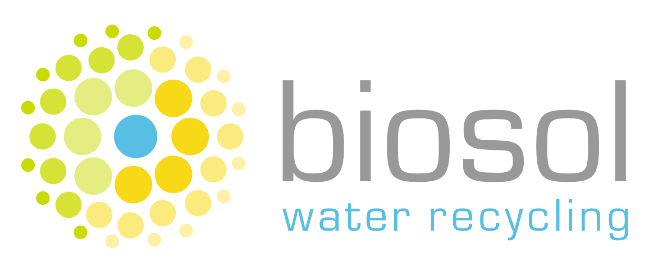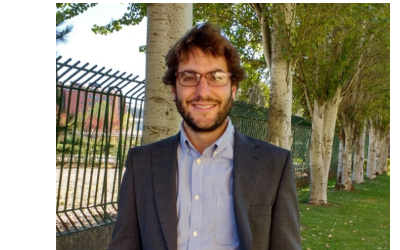- Can you introduce yourself?
I graduated as Chemical Engineering in 2009 and obtained my Master degree in Environmental Technology in 2011 in the University of Valladolid (Spain). I received my Doctoral degree in 2014 in the same institution and then I became part of the research team of the Department of Innovation and Technology from FCC aqualia. I have been working in different projects related with microalgae systems and production of renewable biofuels from wastewater in Chiclana de la Frontera (Cádiz). In 2016, I started-up the first demonstration plant from Aqualia to produce biomethane and renewable natural gas from biogas in the WWTP of Jerez de la Frontera (Cádiz), performing real tests in two CNG cars powered by biomethane. In January 2018, I started working as project manager in LIFE Biosolware project to manage the microalgae facility of Demo 2 site to obtain biofertilizer and water for reuse in El Toyo WWTP (Almería).
- How do you assess the current water resources availability worldwide?
Water scarcity is nowadays a big concern for modern societies, which is taking big relevance in national and international policies. Climate change is already changing the water resources availability and immediate actions should be applied to reduce the impact that water problems would cause in the near future. Moreover, preserving water quality in environmental areas such as rivers, coasts, lakes or underground reservoirs is essential to control and reduce the water contaminants, especially when water is used for humans, animals or crops. In this context, an important issue is to assure a quality water availability not only in developed countries, but worldwide; since 2010 the United Nations General Assembly through Resolution A/RES/64/292 declared safe and clean drinking water and sanitation a human right essential to the full enjoyment of life and all other human rights.
- Are there any solution to face water challenges?
An efficient water and wastewater management is the first and basic concept that should be attained. To that end, implementing new technologies that foster water reuse in WWTPs and reduce energy consumption is essential to deal with water problems. Aqualia has been testing alternative techniques of treating wastewater in a more sustainable way for several years in the frame of different projects. For example, microalgae based WWTPs offer several advantages since they consume less energy than conventional processes (0.2 kWh/m3 versus 0,5 kWh/m3) and reach higher depuration levels (nutrients removal) enabling the opportunity of producing valuable sub-products (biofertilizers). On the other hand, energy recovery from wastewater is also relevant to produce valuable resources such as green electricity, biofuels or natural gas from wastewater. Also, Aqualia has applied efficient technologies based on membranes, advanced nutrients removal or disinfection processes which are being tested in demonstration plants to enhance water reuse and show the full potential that new technologies present respect to conventional treatments. Then, from Aqualia I&T we are convinced that conventional wastewater treatment systems are out of date and the new WWTPs need different concepts to change the paradigm of wastewater management.
- You have a large expertise on microalgae systems for water treatment. Based on your experience, how easy or difficult is it to implement this solution?
Microalgae systems have shown a big potential for wastewater treatment during the last years. Aqualia has been testing and operating different raceway ponds during more than 5 years and has obtained very good performance in terms of water treatment. Chiclana de la Frontera WWTP, where FP7 All-gas has been implemented, is nowadays a worldwide reference for the microalgae technology with more than 2 ha cultivation area. But other facilities, such as the plants commissioned in the frame of LIFE Biosolware project in Sevilla, Grado and Almería, are helping to study the behavior of these systems under different environmental conditions. Aqualia supports the microalgae-based technologies because they will help to minimize energy demand in WWTPs and reach higher quality effluents. However, its implementation in full scale plants is slow due to markets uncertainty and scarce budgets for new construction during the last years. Moreover, surface availability and climate conditions play a key role when selecting a potential location for a microalgae system which should be carefully evaluated. Small communities with high solar radiation (most southern part of Europe) could be perfect candidates to that end.
- BioSolWaRe is a demonstrative Project funded by the LIFE Programme. Based on your experience, which rol does the LIFE Programme play on the protection of the environment?
LIFE Program is a valuable tool to help and develop new sustainable technologies to be tested and validated in demonstration plants under real conditions. During the last years, Aqualia has participated in several LIFE projects such as Biosolware (of which 5 LIFE projects are currently ongoing). After this experience, I find that this kind of programs promotes the collaboration between international partners, helping the exchange of knowledge and experience between small and big companies, research centers and universities. Environmental protection actions are directly fostered by LIFE funding, especially for preserving natural resources like water.


